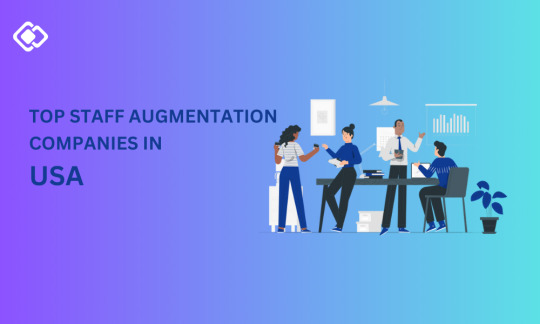#Best Management Software for Workforce Efficiency
Explore tagged Tumblr posts
Text
#ERP solution for contractors#Contractor management software#Construction ERP software#All-in-one ERP for contractors#Best ERP for construction industry#Project management ERP for contractors#Contractor operations software#ERP for general contractors#ERP for specialty contractors#Streamlining contractor operations#Best ERP software for construction contractors#ERP for managing contractor bids and projects#Cloud-based ERP for construction industry#How to streamline contractor operations with ERP#ERP solution for efficient project management#Contractor job tracking software#Financial management ERP for contractors#AI-powered ERP for contractors#Real-time project tracking ERP#Contractor workforce management ERP
1 note
·
View note
Text
Best Business Software Tools in 2024
The right software tools can help increase productivity, draft operations more efficiently and promote company growth in today's high-paced business environment. Whether you are a start-up or an existing enterprise the following business software is necessary to improve different areas of your business.
1. Project Management: ClickUp

It is a feature-laden project manager that lets you handle tasks, projects, and workflows of all types. Its ease of use and user-friendly interface, complimented with diverse dashboards cater to audiences between small teams and large organizations. Task assignments, time tracking, goal setting, and collaboration options allow you to stop hopping between spreadsheets and emails so your projects are complete efficiently.
2. CRM–– Zoho CRM
Zoho CRM — Your Intelligent Customer Relationships Management System. Among other features, it has lead management, sales automation, and analytics to make sales performance improve on a consistent streamline both administrative aspect as well as customer satisfaction. Due to its integration capabilities with other Zoho products, as well as most third-party applications, It has become a flexible option for businesses that are ready to supercharge their customer relationship management.
3. Accounting: Zoho Books

Zoho Books- The Best Accounting Software for Business Owners Invoicing, expense tracking and financial reporting are some of its features. You can also rest assured that your taxes are being handled correctly and always have the latest view of your financial health to help you manage your finances better.
4. HR Management: monday. com HR
It is a complete human resources management software that helps companies to better structure their workforce. This system provides with facilities like employee on boarding, performance tracking, payroll management etc. With the platform's ease of use, UI simplicity, and automation capabilities in HR processes that would otherwise take hours away from key HR initiatives.
5. Payroll: OnPay

OnPay is an excellent payroll software for businesses of all sizes. It is a cloud payroll software for businesses that ensures complete compliance and automation of top-class payroll calculations, tax filings & employee payments. Additionally, OnPay provides HR and benefits management tools, effectively providing a full-fledged employee pay management solution.
6. Point-of-Sale (POS): eHopper
Versatile Point of Sale Software for Businesses Up To Mid-Sized It offers services like Inventory management, sales tracking and customer management. This makes eHopper a perfect choice for businesses that intend to simplify their sales operations using an affordable and intuitive POS system.
7. Inventory Management: Cin7

While there are plenty of other inventory management systems available, Cin7 stands out as one of the most popular options for small to mid-size businesses (SMBs) looking to get their stock levels, orders and supply chain operations under control. These functionalities consist of real-time inventory monitoring, order processing and e-commerce platform integration. With the powerful feature set of Cin7, businesses can keep inventory at an optimal level and fulfill customer demands to the hilt.
8. Website Builder: Weebly
Weebly is the website builder that you can also use to build your site or blog. It has lots of customizable templates, drag-and-drop functionality, and e-commerce ready to go. With Weebly, you can create a professional website even if you are a tech noob and give your business the relevant online visibility it needs.
9. Recruiting: ZipRecruiter

ZipRecruiter: Popular rated job search app for businesses on board. They provide hiring solutions through features like job posting candidates filtering and tracking the application. AI-powered matching from ZipRecruiter surfaces more relevant candidates to businesses faster.
10. VPN: NordVPN
It is a secure, encrypted VPN application that will make sure that you and your business stay safe as you work with the web. It provides features of encrypted connections, threat protection and global server access as well. In this way, It guarantees secure data in companies and privacy on internet.
Conclusion
The business software tools a company uses are very important to increase productivity and power growth. The above-mentioned tools are some of the best & flexible according to the fact which can assist businesses for any sized groups and help them attain their desired objectives. Implementing these tools in your operations can also help speed up processes and lead to higher customer satisfaction, as well as allow you to be on top of the competition.
#business#business growth#innovation#startup#entrepreneur#100 days of productivity#project management#sales#payroll#hr management#hr software#hr services#ai#artificial intelligence#technology#tech#techinnovation
2 notes
·
View notes
Text
Empower Your Workforce with Employee Credit Cooperative Society Benefits
Enhance your organization's employee benefits with our Employee Credit Cooperative Society solutions. Our employee management software streamlines staff management and benefits administration, offering employer loans to employees and efficient headcount management. Provide benefits for staff with our employee management system software, fostering a culture of mutual aid and solidarity. Elevate your employee benefits program with our comprehensive platform today!
To know more please visit our website:-https://cooperative-society-software.com/employee-credit-cooperative-society/
Phone: 0731–4095613,
+91-9329422917
Address: 253-A, 2nd Floor, Orbit Mall, A.B. Road, Indore (M.P.) – 452001
Tags: employee benefits, employee management software, employee management system, company benefits, employer loans to employees, employee software, employee loan, staff management system, employee management, software for employee management system, loans through employer, best software for employee management, employee management platform, company benefits for employees, company loans to employees,

#employee benefits#employee management software#employee management system#company benefits#employer loans to employees#employee software#employee loan#staff management system#employee management#software for employee management system#loans through employer#best software for employee management#employee management platform#company benefits for employees#company loans to employees
2 notes
·
View notes
Text
SUCCESSFACTORS HCM

Transforming HR with SAP SuccessFactors HCM
In the fast-paced, ever-changing world of human resources, organizations need powerful tools to streamline processes, elevate the employee experience, and make data-driven decisions. Enter SAP SuccessFactors HCM (Human Capital Management), a leading cloud-based HR solution designed to do just that.
What is SuccessFactors HCM?
SAP SuccessFactors HCM is a comprehensive suite of HR modules that provides businesses with a centralized platform to manage the entire employee lifecycle regardless of size or industry. It covers the full range of HR functions, including:
Core HR & Payroll manages essential employee data, automates payroll, and precisely handles time and attendance.
Talent Management: Streamlines recruiting, onboarding, performance and goal management, learning, compensation, and succession planning.
Employee Experience Management: Enhances employee engagement through surveys, continuous feedback, and action planning.
HR Analytics and Workforce Planning: Delivers powerful insights, enables scenario modeling, and supports strategic people-related decisions.
Why Choose SuccessFactors HCM?
Here are some compelling advantages of using SuccessFactors HCM:
Cloud-Based Flexibility: SuccessFactors is a SaaS (Software-as-a-Service) solution. This means no hefty hardware investments, automatic updates, high accessibility, and the freedom to scale as needed.
Global Reach: Supports multinational operations with multiple languages and currencies and ensures compliance with local regulations.
Seamless Integration: Connects easily with other SAP solutions and third-party systems for a unified business environment.
Employee-Centric Design: Delivers personalized experiences and empowers employees with self-service tools.
Powerful Analytics: Helps HR leaders gain a real-time understanding of their workforce and make insights-based decisions.
Key Use Cases
SuccessFactors HCM can be transformative across various aspects of HR operations:
Streamlining Recruitment: Speed up finding and hiring top talent, ensuring a smooth candidate experience.
Boosting Employee Development: Personalize learning plans, track progress and promote growth within the organization.
Rewarding Performance: Accurately link performance assessments with compensation, ensuring fairness and motivation.
Insightful Planning: Make accurate workforce forecasts, conduct “what-if” scenario analysis, and optimize resource allocation.
Enhancing Engagement: Gather actionable feedback and insights into the overall employee experience.
Getting Started with SuccessFactors HCM
If you’re considering implementing SuccessFactors HCM, remember:
Thorough Assessment: Define your HR needs and how they align with organizational goals.
Specialized Partner: Work with an experienced SAP SuccessFactors implementation partner to ensure a smooth rollout
Change Management: Train your employees and the HR team on the new system. Focus on the benefits and support adoption.
Conclusion
SAP SuccessFactors HCM has the potential to redefine the way businesses manage their most valuable asset—their people. By embracing this platform, organizations can enhance efficiency, nurture talent, gain deeper insights, and build a more engaged workforce.
youtube
You can find more information about SAP HR in this SAP HR Link
Conclusion:
Unogeeks is the No.1 IT Training Institute for SAP HR Training. Anyone Disagree? Please drop in a comment
You can check out our other latest blogs on SAP HR here – SAP HR Blogs
You can check out our Best In Class SAP HR Details here – SAP HR Training
———————————-
For Training inquiries:
Call/Whatsapp: +91 73960 33555
Mail us at: [email protected]
Our Website ➜ https://unogeeks.com
Follow us:
Instagram: https://www.instagram.com/unogeeks
Facebook: https://www.facebook.com/UnogeeksSoftwareTrainingInstitute
Twitter: https://twitter.com/unogeeks
2 notes
·
View notes
Text
Deciding Between Selenium with Python and Selenium with Java: An In-Depth Comparison
In the domain of automated testing, Selenium emerges as a pivotal tool for ensuring the reliability and quality of web applications. When it comes to selecting the programming language to harness Selenium's capabilities, two prominent contenders often come into play: Python and Java. Both languages offer distinct advantages and considerations, making the decision between them crucial for any automation project.

In this blog post, we'll conduct a thorough comparison of Selenium with Python and Selenium with Java, exploring their unique strengths, use cases, and factors to consider. By the end, readers will have a clearer understanding of which option aligns best with their project requirements, team proficiencies, and organizational objectives.
Python with Selenium:
Python, celebrated for its simplicity and readability, has garnered significant traction within the automation testing community. Let's delve into some key benefits of leveraging Python with Selenium:
Simplicity and Readability: Python's hallmark characteristics include simplicity and readability. Its concise syntax enables developers to express ideas in fewer lines of code, resulting in scripts that are easier to comprehend and maintain. For testers, this translates to expedited development cycles and reduced overhead in managing test suites.
Extensive Ecosystem: Python boasts a vast ecosystem of libraries and frameworks that complement Selenium, augmenting its capabilities for test automation. Whether handling data manipulation, conducting API testing, or generating test reports, Python's rich library support caters to diverse automation needs. Furthermore, the active Python community ensures an abundance of resources, tutorials, and documentation to aid testers throughout the automation journey.
Rapid Prototyping: Python's dynamic nature lends itself well to rapid prototyping and iterative development. Testers can swiftly experiment with different approaches, adapt scripts on-the-go, and respond promptly to evolving requirements. This flexibility seamlessly aligns with agile development methodologies, empowering teams to deliver high-quality software with agility.
Integration Compatibility: Python's interoperability with other tools and technologies makes it an appealing choice for Selenium automation. Whether integrating with continuous integration (CI) pipelines, test reporting frameworks, or version control systems, Python's versatility ensures smooth interoperability, streamlining the testing workflow and bolstering overall efficiency.

Java with Selenium:
Java, renowned for its robustness and performance, has long been a cornerstone in enterprise software development. Here are some compelling reasons to consider Java for Selenium automation:
Robustness and Performance: Java's static typing and strong object-oriented principles contribute to the robustness and performance of Selenium test suites. Its compile-time error checking aids in identifying potential issues early in the development phase, resulting in more stable and reliable automation scripts. For large-scale enterprise projects with stringent quality requirements, Java's reliability is a significant asset.
Widespread Adoption: Java enjoys widespread adoption within the enterprise landscape, making it a natural choice for organizations with existing Java codebases or a Java-centric development environment. The abundance of Java expertise in the workforce, coupled with extensive community support and industry recognition, solidifies its status as a preferred language for Selenium automation in many corporate settings.
Mature Tooling: Java's mature ecosystem of testing tools and frameworks, including JUnit and TestNG, seamlessly integrate with Selenium to offer comprehensive test automation solutions. These frameworks furnish advanced features such as parameterized testing, parallel execution, and built-in reporting capabilities, empowering testers to design and execute sophisticated test suites effortlessly.
Enterprise Support: Java's popularity in enterprise environments translates to robust support from vendors, extensive documentation, and a plethora of third-party integrations. For organizations seeking enterprise-grade features, reliability, and scalability in their Selenium automation endeavors, Java's ecosystem and support infrastructure present a compelling value proposition.
Conclusion:
In summary, both Selenium with Python and Selenium with Java present compelling options for test automation, each with its unique strengths and considerations. Python excels in simplicity, rapid development, and a vast ecosystem, making it an ideal choice for agile teams and projects with evolving requirements. Conversely, Java offers robustness, performance, and widespread enterprise support, rendering it well-suited for large-scale enterprise applications with stringent quality standards.
Ultimately, the decision between Python and Java for Selenium automation hinges on various factors such as project prerequisites, team proficiencies, and organizational preferences. By meticulously evaluating these factors and weighing the pros and cons of each option, stakeholders can make informed decisions that align with their specific needs and aspirations. Whether opting for the simplicity of Python or the robustness of Java, Selenium remains an indispensable tool for driving quality and efficiency in web application testing.
2 notes
·
View notes
Text
Efficient Offshore Crew Management Solutions
When it comes to offshore operations, efficientcrew management is the compass that guides a successful voyage. In the demanding worlds of maritime, oil & gas, and renewable energy, the management of offshore personnel is a complex and critical task. To ensure smooth sailing and boost productivity, it's imperative to stay on top of the latest trends and technologies in offshore crew management. In this blog, we'll explore the key strategies and innovations that are transforming the offshore crew management landscape.

Understanding Offshore Crew Management
Offshore crew management involves the selection, training, scheduling, and overall supervision of the workforce that operates and maintains offshore installations such as oil rigs, drilling platforms, wind farms, and vessels. It's a multifaceted task that demands meticulous planning, safety protocols, and a keen eye for efficiency.
The Key Elements of Successful Crew Management
1. Recruitment and Onboarding
The foundation of offshore crew management is selecting the right personnel. It begins with a thorough recruitment process to identify individuals with the necessary skills, experience, and qualifications. Once selected, a robust onboarding program ensures that new crew members are well-prepared for their roles and responsibilities.
2. Training and Certification
Continuous training and certification are vital to maintaining a skilled and safety-conscious crew. Industry-specific training programs, emergency response drills, and the acquisition of relevant certifications are essential components of offshore crew management.
3. Scheduling and Rotation
Efficient scheduling and rotation systems balance the need for continuous operations with crew well-being. Implementing well-thought-out shift schedules, including leave rotations, reduces fatigue and enhances performance.
4. Safety and Compliance
Safety is paramount in offshore operations. Compliance with industry regulations, rigorous safety procedures, and regular safety drills are essential for offshore crew management.
Embracing Technology
The digital age has brought forth a wave of innovations in offshore crew management:
1. Crew Management Software
Specialized software solutions have streamlined the administrative aspects of crew management. They help with crew scheduling, training tracking, and compliance monitoring, making it easier to manage a large workforce across multiple locations.
2. Communication Technology
Efficient communication is crucial in offshore environments. High-tech communication systems enable real-time connectivity between onshore and offshore personnel, enhancing safety and operational efficiency.
3. Predictive Analytics
Predictive analytics helps in forecasting crew needs, optimizing schedules, and planning for crew training and certification renewal, reducing downtime and costs.
Embracing Sustainability
As the world shifts towards sustainable energy solutions, offshore crew management in the renewable energy sector is gaining prominence. Managing diverse crews working on wind farms and offshore renewable projects requires specialized approaches that prioritize sustainability and environmental responsibility.
Conclusion
Offshore crew management is the linchpin of safe, efficient, and productive offshore operations. By embracing the latest technologies, adhering to best practices, and staying attuned to industry trends, organizations can navigate the seas of offshore crew management with confidence. Whether it's in traditional oil and gas or the burgeoning renewable energy sector, a well-managed crew is the key to success in these challenging environments. So, set your course for success by prioritizing the well-being and productivity of your offshore crew.
Remember, in the world of offshore operations, a well-managed crew is your North Star!
3 notes
·
View notes
Text
Best Logistics Fleet Management Software
In the rapidly evolving world of logistics, effective fleet management is the key to success.
Whether you oversee a fleet of trucks, delivery trucks, or a combination of vehicles, having the right logistics fleet management software can be a game changer. These software solutions are designed to streamline operations, reduce costs and improve overall efficiency. In this article, we'll explore some of the best logistics fleet management software options available, each offering unique features to help businesses navigate the path to efficiency.

1. Geotab:
Geotab is a comprehensive fleet management software known for its real-time tracking, route optimization, and maintenance tracking. It's a versatile solution suitable for fleets of all sizes.
2. Samsara:
Samsara offers a robust fleet management platform with features like real-time GPS tracking, driver safety monitoring, and vehicle diagnostics.
It's a favorite among businesses looking to enhance safety and compliance.
3. Teletrac Navman:
Teletrac Navman provides fleet management software focused on real-time tracking, compliance and driver behavior monitoring.
This is the preferred choice for companies looking to improve driver performance and reduce fuel costs.
4. Fleet Complete:
Fleet Complete offers a comprehensive suite of fleet management tools, including GPS tracking, dispatching and asset management. It is highly adaptable and can cater to different industries.
5. KeepTruckin:
KeepTruckin is known for its user-friendly fleet management software. It offers features like electronic logging, IFTA reporting, and vehicle inspections, making it a great choice for small to medium fleets.
6. Verizon Connect:
Verizon Connect provides GPS fleet tracking software focused on route optimization, fuel management and field service automation. It is ideal for businesses looking to reduce costs and increase productivity.
7. Route4Me:
Route4Me offers advanced route optimization software, perfect for last-mile delivery operations. It offers real-time tracking, geolocation, and route planning capabilities, making it an essential tool for businesses delivering to customers.
8. WorkWave Route Manager:
WorkWave Route Manager is a cloud-based fleet management solution designed for mobile workforces. It offers route optimization, GPS tracking, and reporting, making it an ideal choice for delivery businesses.
Selecting the right logistics fleet management software is crucial for businesses seeking to stay competitive and efficient in the logistics industry. These software solutions cater to a wide range of needs, from real-time tracking and route optimization to driver safety and compliance.
As the logistics landscape continues to evolve, having the best fleet management software can put your business on the path to success.
5 notes
·
View notes
Text
Maximizing HR Productivity: Strategies and Best Practices
Maximizing HR Productivity: Strategies and Best Practices
In today's fast-paced business environment, maximizing HR productivity has become crucial for organizations to stay competitive and achieve their goals. Human Resources (HR) departments play a vital role in managing and developing a company's workforce, and optimizing their productivity can lead to improved employee engagement, higher retention rates, and overall organizational success. This article explores various strategies and best practices that can help organizations maximize HR productivity, with a focus on utilizing PiHR software as an example.

The Importance of HR Productivity
Effective HR management is critical for organizations to attract, develop, and retain top talent. Maximizing HR productivity enables businesses to align their workforce with strategic goals, enhance employee engagement, and create a positive work environment. By optimizing HR processes and leveraging technology, organizations can streamline operations and focus more on strategic initiatives.
Streamlining Recruitment and Hiring Processes
Efficient recruitment and hiring processes are fundamental to HR productivity. By leveraging tools like PiHR software, organizations can automate job posting, resume screening, and applicant tracking, reducing manual effort and improving efficiency. Creating standardized interview processes, implementing pre-employment assessments, and conducting background checks can help identify the best-fit candidates and streamline the hiring process.
Enhancing Employee Onboarding and Training
Effective onboarding and training programs contribute to employee satisfaction, engagement, and productivity. Utilizing PiHR software, HR departments can develop personalized onboarding plans, automate paperwork, and provide access to training materials. Incorporating interactive elements, mentorship programs, and regular feedback sessions during onboarding can accelerate the integration of new employees into the organization.
Implementing Performance Management Systems
Implementing robust performance management systems helps organizations align employee goals with business objectives, foster a culture of continuous improvement, and recognize and reward high performers. PiHR software offers features which are: Attendance Management Software, Shift Management Employee, Leave Application, Payroll Software, Tax Management, Expense Management, Employee Management Tool, Employee Tracking, Task Management, Digital Notice Board, Notifications, and Security.
Developing Effective Employee Communication Channels
Open and transparent communication is essential for building trust, fostering collaboration, and ensuring employee satisfaction. HR departments can leverage PiHR software to create communication channels that facilitate real-time information sharing, feedback collection, and employee engagement. Integrating chat platforms, employee self-service portals, and internal social networks can enhance communication and create a sense of belonging within the organization.
Automating HR Administrative Tasks
HR professionals often spend a significant amount of time on administrative tasks, which can hinder their ability to focus on strategic initiatives. By automating routine HR processes using PiHR software, such as employee data management, leave and attendance tracking, and payroll processing, HR departments can reduce manual effort, minimize errors, and free up time for more value-added activities.
Leveraging Data Analytics and Reporting
Data-driven decision-making is becoming increasingly important in HR management. PiHR software offers robust analytics and reporting capabilities, allowing HR professionals to gain insights into workforce trends, identify areas for improvement, and make informed decisions. Analyzing data related to employee performance, engagement, and turnover can provide valuable insights for developing targeted strategies to maximize HR productivity.
Ensuring Compliance with HR Regulations
Compliance with HR regulations is crucial to avoid legal issues and maintain a fair and inclusive work environment. PiHR software can help HR departments stay updated on changing regulations, automate compliance processes, and generate accurate reports. By ensuring compliance with labor laws, data privacy regulations, and diversity and inclusion requirements, organizations can minimize legal risks and create a positive employer brand.
Emphasizing Continuous Learning and Development
Investing in employee learning and development is a strategic approach to maximize HR productivity. HR departments can leverage PiHR software to create personalized learning paths, offer online training modules, and track employees' progress. By encouraging continuous learning, organizations can enhance employee skills, increase job satisfaction, and foster a culture of innovation and growth.
Promoting Work-Life Balance and Well-being
Supporting work-life balance and employee well-being is essential for maintaining a motivated and productive workforce. PiHR software can help HR departments implement flexible work arrangements, manage employee benefits, and provide wellness programs. Promoting a healthy work environment, encouraging stress management, and recognizing work-life balance can contribute to improved productivity and employee satisfaction.
Conclusion
Maximizing HR productivity is crucial for organizations seeking to thrive in today's competitive landscape. By implementing strategies and best practices such as streamlining recruitment and hiring processes, enhancing employee onboarding and training, implementing performance management systems, and leveraging technology like PiHR software, organizations can optimize HR operations, drive employee engagement, and achieve long-term success.
2 notes
·
View notes
Text
Top Staff Augmentation Company in USA for Expert Talent Services

Why Staff Augmentation is Essential for Businesses
In today's fast-paced digital world, businesses require skilled professionals to drive their projects efficiently. A staff augmentation company in the USA provides organizations with a flexible and cost-effective service to scale their teams, access top-tier talent, and meet project demands without the long-term commitment of traditional hiring. Companies leverage staff augmentation to enhance productivity, reduce operational costs, and gain a competitive edge in their industry.
Key Benefits of Staff Augmentation Services
1. Access to a Global Talent Pool
With staff augmentation, businesses can tap into a diverse range of skilled professionals across various industries. This ensures they get the best talent suited for their specific project requirements.
2. Cost-Effective and Scalable Services
Hiring full-time employees can be expensive. Staff augmentation allows businesses to scale their workforce up or down based on project needs, helping them optimize costs effectively.
3. Faster Hiring Process
Traditional hiring can be time-consuming. Staff augmentation companies provide pre-vetted professionals who can integrate into teams quickly, reducing the time required to onboard new talent.
4. Enhanced Productivity and Efficiency
By bringing in specialized professionals, businesses can improve workflow efficiency and complete projects faster without compromising quality.
5. Reduced Administrative Burden
Managing full-time employees involves legal, payroll, and HR responsibilities. With staff augmentation, companies can focus on core business functions while outsourcing administrative tasks.
6. Seamless Integration with In-House Teams
Augmented staff members work alongside in-house teams, ensuring smooth collaboration and knowledge transfer without disrupting existing workflows.
Features of a Staff Augmentation Company in USA
1. Specialized IT and Development Experts
A top staff augmentation company in the USA provides experienced IT professionals, including software developers, project managers, QA testers, and DevOps engineers, ensuring top-quality project execution.
2. Flexible Engagement Models
Businesses can choose between short-term or long-term staff augmentation services, depending on their needs. This ensures complete flexibility in workforce management.
3. Expertise in Emerging Technologies
Augmented teams come with knowledge of the latest technologies such as AI, blockchain, IoT, and cloud computing, helping businesses stay ahead in innovation.
4. Compliance and Security Assurance
Staff augmentation providers ensure that professionals adhere to industry regulations, security protocols, and compliance standards, safeguarding business operations.
5. Support for iPhone App Development Companies
Many businesses searching for an iPhone app development company can also benefit from staff augmentation services. With access to top iOS developers, UI/UX designers, and app testers, businesses can enhance their mobile app development capabilities without hiring an in-house team.
6. On-Demand Hiring for Projects of Any Scale
Whether businesses need a single developer or an entire team, staff augmentation companies provide tailored services to match specific project requirements.
How Staff Augmentation Benefits iPhone App Development Companies
For businesses looking for an iPhone app development company, staff augmentation is an ideal service to:
Quickly hire experienced iOS developers and designers.
Reduce development costs by scaling teams based on project phases.
Improve app performance with expert quality assurance and testing teams.
Ensure faster time-to-market with a skilled and dedicated workforce.
Access professionals with expertise in Swift, Objective-C, and Apple’s latest frameworks.
Conclusion
At TechAhead, we provide expert staff augmentation services in the USA, helping businesses access top-tier talent for software development, mobile app projects, and more. Whether you’re looking for skilled professionals or need an experienced iPhone app development company, our dedicated teams are here to support your business goals. Contact us today to build a high-performing workforce and accelerate your project success!
0 notes
Text
Streamline Your Workforce with EZHRM – The Best Human Resources Management Software
Managing HR operations can be challenging, but with EZHRM’s Human Resources Management Software, you can simplify and automate all your workforce-related tasks. From attendance tracking to payroll processing, EZHRM is designed to enhance efficiency and ensure seamless HR management. Why Choose EZHRM? ✅ Automated Payroll & Salary Management – No more manual calculations! EZHRM ensures accurate salary processing with tax compliance. ✅ Attendance & Leave Tracking – Keep track of employee attendance with biometric, mobile, or web-based solutions. ✅ Expense & Reimbursement Management – Streamline claims and approvals with a hassle-free process. ✅ Employee Self-Service Portal – Empower employees with access to their salary slips, leave balances, and work schedules. ✅ Project & Task Management – Assign, track, and manage projects efficiently within the software. ✅ Secure Cloud-Based Storage – Keep all employee data safe with encrypted cloud backup.
Transform your HR operations with EZHRM today! Need more details? Contact us now.
0 notes
Text
Enhancing workplace productivity is crucial for business success. Employee monitoring software helps track work activities, ensuring efficiency and accountability.
Key Features
Real-Time Tracking – Monitor employees' activities and performance.
Time & Attendance Management – Track work hours and attendance.
Website & Application Monitoring – Identify productivity trends.
Automated Reports & Alerts – Get insights into workflow efficiency.
Conclusion
Investing in the best employee monitoring software enhances productivity, ensures accountability, and streamlines workflow. Choose the right tool to drive business success and maintain an efficient workforce.
0 notes
Text
Payroll Outsourcing: The Best Way to Simplify Employee Payments
It can be payroll management-from small to large organizations; every organization definitely will pay for the payroll outsourcing agency time. In the same manner, timely disbursement of salaries to employees ensures compliance with tax regulations while providing employee benefits that require a lot of effort and, quite therefore, payroll outsourcing in business as the cost-effective but successful solutions.
Payroll Outsourcing
Outsource to compute payroll income tax compliance and provide end-to-end payroll services, making the business entirely payroll. Business concentrate on its core operations; while payroll services carry out their functions for the benefit of the business.
Advantages of Outsourcing Payroll
Time Saver The payroll activity involves the calculation of pay according to what was accounted for as tax deduction, compliance with labor law regarding pay, and deductions in legal provisions by the department. With outsourcing, there can be time created for HR and management to focus on strategic planning since this activity is a shared activity.
Cost Saver Salary bases diminish, and sometimes, the software and training-related overheads are negligible. The in-house payroll team becomes costlier compared with outsourced options because the outsourced option provides comprehensive services at a very minimal rate.
Compliance With respect just to legal advice on taxation laws and labor rights', the payroll service provider takes liability. Hence this minimizes the risks of any penalties and legal questions arising from the miscalculations or missed deadlines.
Efficiency and Accuracy Payroll mistakes will create high employee dissatisfaction and huge income losses. Placing payroll with specialists minimizes errors in payroll processes, which aids in ensuring that employees are paid on time and in the right manner.
Increased Data Security Payroll has sensitive information-assets: financial and personal. However, because these reputed outsourcing houses have their very high-end security and encryption systems, such data remain protected from all forms of external breach and fraud.
Scalable and Flexible As most businesses grow, they would also multiply the problems of payroll. This outsourced payroll service has the capacity to easily accommodate adding employees and new regulation changes at a minor cost.
Working of Outsource Payroll In this line, the company would typically go through the following processes:
Selecting A Payroll Service Provider- The criteria that a business has to consider when seeking a payroll outsourcing firm.
Data Record- The employer has to provide salary, attendance, and tax-related data regarding his or her employees to the payroll provider.
Payroll Activity- The provider has to do computations about an employee's accrued salary, deductions, and tax obligations needed by labor law compliance.
Payment Process- Payments can be done through the wire transfer or any other acceptable means.
Filing and Reporting of Taxes: The provider files taxes on behalf of the business and produces reports.
Conclusion
In fact, outsourcing payroll is a rather intelligent and strategic way for many businesses to streamline processes, reduce costs, and maintain regulatory compliance. It ensures the workforce of the organization is accurate and timely paid while focusing on its other business aspects. Indeed, even Raymoon addresses car business payroll outsourcing needs under provide. Now do for you all elaborate payroll specifics while working to realize success in the business.
0 notes
Text
CRM Development in Riyadh: Unlocking Business Growth with Smart Solutions

Customer Relationship Management (CRM) software has become an essential tool for businesses looking to streamline operations, enhance customer engagement, and drive growth. In Riyadh, a booming business hub in the Middle East, the demand for custom CRM solutions is rising as companies seek tailored systems that align with their unique needs.
Why CRM Development is Crucial in Riyadh
With Riyadh's economy rapidly expanding across sectors like retail, finance, healthcare, and real estate, businesses need efficient ways to manage customer interactions. A well-developed CRM system helps companies:
Automate workflows to improve efficiency
Track customer interactions for better engagement
Enhance data-driven decision-making through analytics
Increase sales and revenue with optimized lead management
Ensure compliance with Saudi regulations regarding data security
Key Features of a Successful CRM
When developing a CRM system in Riyadh, businesses should focus on the following features:
1. Customizable Modules
Every business has unique needs. A good CRM should allow customization of sales pipelines, customer support dashboards, and reporting tools.
2. Multilingual & Localization Support
Since Riyadh is home to a diverse workforce and customer base, supporting both Arabic and English is crucial. This ensures seamless communication and user-friendliness.
3. Integration with Existing Systems
A CRM should integrate with ERP systems, accounting software, marketing automation tools, and e-commerce platforms for smooth operations.
4. AI-Powered Analytics & Automation
Using AI for predictive analytics, customer segmentation, and automated follow-ups can enhance engagement and boost sales.
5. Mobile Accessibility
With the high mobile usage rate in Saudi Arabia, a CRM with a mobile-friendly interface ensures that sales teams and customer service reps can access data on the go.
6. Compliance & Data Security
Given Saudi Arabia’s strict data protection laws (such as the Personal Data Protection Law - PDPL), CRM systems must have robust security measures, including encryption, role-based access, and secure cloud storage.
Choosing the Right CRM Development Approach
Custom CRM vs. Off-the-Shelf Solutions
Custom CRM: Best for businesses with specific workflows and unique requirements. It offers scalability and full control over features.
Off-the-Shelf CRM (e.g., Salesforce, HubSpot): Faster to implement but may require extensive customization to fit local business needs.
On-Premise vs. Cloud-Based CRM
On-Premise CRM: Offers full data control but requires higher maintenance and infrastructure costs.
Cloud-Based CRM: Provides scalability, remote access, and cost-effectiveness, making it ideal for businesses in Riyadh looking for flexibility.
Finding the Right CRM Development Partner in Riyadh
When selecting a CRM development company in Riyadh, consider: ✅ Experience in CRM development for your industry ✅ Knowledge of Saudi business regulations and data security compliance ✅ Ability to provide ongoing support and updates ✅ Expertise in cloud computing, AI, and API integrations
Final Thoughts
Developing a CRM system in Riyadh requires a strategic approach that considers business needs, local compliance, and future scalability. Whether you’re a startup or an established enterprise, investing in a well-structured CRM can enhance customer experiences, optimize workflows, and drive business success in Saudi Arabia’s competitive market.
Looking for expert CRM development services in Riyadh? Contact a trusted development partner to build a CRM that aligns with your business goals. 🚀
1 note
·
View note
Text
HR Training in Bangalore

Why HR Training is Essential?
HR training enhances the ability of HR professionals to manage talent, enforce policies, and contribute to the company’s growth. An efficient HR team can improve employee engagement, increase retention, and ensure legal compliance, making HR training an investment rather than an expense.
Types of HR Training in Bangalore
Several types of HR training programs are available, each focusing on different aspects of human resource management. Below are some of the most sought-after HR training types offered at Zonal Tech Solution.
1. HR Generalist Training
HR Generalist training provides a comprehensive understanding of HR functions, making it ideal for those starting their career in HR. It covers topics like:
Recruitment and selection
Employee relations
Payroll and compensation
Performance management
Compliance and labor laws
2. HR Payroll Training
Payroll training focuses on salary processing, taxation, and compliance. This training includes:
Payroll processing techniques
Income tax computation
Provident fund, ESI, and gratuity calculation
Statutory compliance
3. Recruitment and Talent Acquisition Training
Hiring the right candidate is crucial for business success. This training includes:
Sourcing strategies
Interviewing techniques
Candidate evaluation
Negotiation and offer management
4. Performance Management Training
This training helps HR professionals design and implement effective performance evaluation systems. Key topics include:
Goal setting and KPI measurement
Employee feedback methods
Performance appraisal techniques
5. Compensation and Benefits Training
This training helps HR professionals design competitive salary packages to attract and retain talent. It covers:
Salary structuring
Incentive and bonus planning
Compensation benchmarking
6. Labor Laws and Compliance Training
Legal compliance is a critical part of HR management. This training includes:
Indian labor laws overview
Employment contracts and workplace policies
Handling legal disputes
7. HR Analytics Training
HR analytics helps in data-driven decision-making. This training includes:
Data collection and analysis
HR metrics and reporting
Predictive analytics in HR
8. Organizational Development (OD) Training
OD training focuses on improving organizational effectiveness. It covers:
Change management strategies
Leadership development
Employee engagement techniques
9. Employee Engagement Training
A motivated workforce leads to higher productivity. This training focuses on:
Employee motivation strategies
Workplace culture enhancement
Conflict resolution
10. HR Software Training
With technology playing a significant role in HR, professionals need to be adept at HR software. This training covers:
HRMS and HRIS software
Payroll management software
Performance tracking tools
Benefits of HR Training at Zonal Tech Solution
At Zonal Tech Solution, we provide industry-specific training with hands-on experience, live projects, and case studies. Our training programs offer the following benefits:
Industry-relevant curriculum: Updated training materials aligned with current HR trends.
Expert trainers: Experienced HR professionals conduct training sessions.
Practical exposure: Live projects and real-world case studies.
Placement assistance: Job support through resume building and interview preparation.
Flexible schedules: Online and classroom training options are available.
Who Can Enroll in HR Training?
HR training is beneficial for:
Fresh graduates aspiring to enter the HR domain
Working professionals looking for a career shift to HR
HR professionals wanting to upgrade their skills
Entrepreneurs managing HR functions in their businesses
Why Choose Bangalore for HR Training?
Bangalore is one of the best cities for HR training due to its booming corporate ecosystem. With numerous MNCs, startups, and IT companies, the demand for skilled HR professionals is always high. Zonal Tech Solution provides the best HR training programs in Bangalore, ensuring high employability and career growth.
Conclusion
HR training in Bangalore is essential for anyone looking to build a successful career in human resource management. Zonal Tech Solution offers high-quality HR training with a well-structured curriculum, practical exposure, and expert guidance. Whether you are a fresher or a seasoned professional, upgrading your HR skills will open new career opportunities.
Enroll Today!
Take the next step in your HR career with Zonal Tech Solution. Contact us today to learn more about our HR training programs in Bangalore.
0 notes
Text
Adaptive Microlearning: Revolutionizing Frontline Workforce Training

Adaptive learning is a teaching method that uses algorithms and data to tailor learning experiences based on the individual learner's needs. Unlike traditional one-size-fits-all training programs, adaptive learning provides personalized pathways to ensure learners grasp concepts effectively. The system continuously analyzes the learner’s progress and adjusts the content to address knowledge gaps or reinforce skills, ensuring more efficient learning outcomes.
Understanding Adaptive Microlearning
Microlearning refers to the delivery of small, focused learning units that address specific skills or knowledge areas. Adaptive microlearning combines this approach with adaptive learning technology, enabling organizations to deliver personalized micro-courses that adjust in real time to a learner’s progress. This makes learning more flexible, scalable, and effective, especially for frontline workers who may not have the time for lengthy training sessions.
Benefits of Adaptive Microlearning for the Frontline Workforce
Personalization for Better Engagement Adaptive learning software tools help create a training experience tailored to each worker’s individual learning needs. This personalization leads to higher engagement and retention as workers focus on the areas where they need improvement.
Efficient Learning with Bite-Sized Content Adaptive microlearning delivers content in small, digestible segments, making it easier for employees to absorb and retain information. This format fits well with the busy schedules of frontline workers, as they can complete training in short bursts during breaks or downtime.
Real-Time Feedback and Improvement Adaptive learning technology continuously monitors the learner’s progress and provides real-time feedback, allowing workers to correct mistakes immediately and reinforce learning as needed.
Scalable and Flexible Training Programs With adaptive online learning, companies can deliver training to large numbers of employees across various locations. Adaptive learning tools ensure that all employees receive the appropriate content, whether they are new hires or seasoned professionals.
Implementing Adaptive Learning in Employee Training
Selecting Adaptive Learning Software When choosing adaptive learning software for employee training, it’s essential to consider the software’s scalability, ease of integration with existing systems, and ability to personalize content. Many adaptive learning software tools integrate seamlessly with Learning Management Systems (LMS), providing a unified platform for delivering and tracking training progress.
Designing Adaptive Learning Content Creating content for adaptive learning requires an understanding of how learners interact with the material. Training modules should be broken down into micro-units, each addressing a specific skill or knowledge area. Adaptive learning apps can then use learner data to decide which content to present next.
Tracking Employee Progress with LMS LMS platforms that support adaptive learning technology can track employee progress throughout the training process. These systems offer insights into how well employees are mastering specific topics, enabling managers to provide targeted interventions if necessary.
Training for Different Learning Styles Adaptive learning apps and software can cater to diverse learning styles by providing a mix of text, images, videos, and interactive elements. This diversity ensures that all types of learners, whether visual, auditory, or kinesthetic, can engage with the content in the way that suits them best.
The Role of Adaptive Learning in Frontline Learning and On-the-Job Training
Frontline workers often require just-in-time training, meaning they need to learn specific skills or knowledge quickly when facing new tasks. Adaptive learning technology offers significant advantages here, enabling employees to access personalized, relevant content right when they need it most. Whether it’s handling a new customer request or learning how to operate new equipment, adaptive microlearning ensures that workers are prepared for the task at hand.
Incorporating adaptive learning into on-the-job training programs ensures that workers are not overwhelmed with unnecessary information. Instead, they receive tailored, timely training that equips them with the right skills as they need them, improving job performance and reducing the time required for training.
Integrating Adaptive Learning into Learning Initiatives
For businesses, adaptive learning can become a central part of broader learning initiatives aimed at improving employee skills, productivity, and engagement. By offering adaptive learning tools, organizations can provide employees with ongoing development opportunities, helping them grow in their roles and advance within the company.
The Future of Adaptive Learning in Workforce Training
As technology continues to evolve, the future of adaptive learning looks promising. Emerging technologies like artificial intelligence (AI) and machine learning (ML) will further enhance the capabilities of adaptive learning systems, making them even more personalized and responsive to individual needs. These technologies will also provide deeper insights into employee performance, enabling organizations to continuously improve their training programs.
#AdaptiveMicrolearning#WhatisAdaptiveLearning#AdaptiveLearningSoftware#AdaptiveLearning SoftwareTools#AdaptiveLearningTools#AdaptiveLearningTechnology#AdaptiveLearningLms#AdaptiveOnlineLearning#AdaptiveLearningApps#LmsTraining#TrainingIndividual#OnAJobTraining#Frontlinelearning
0 notes
Text
IT Staff Augmentation at Orestes Pvt Ltd: Providing Businesses with Expert Talent to Drive Success
In the fast-paced world of technology, organizations must keep abreast of the changing trends, refine their operations, and gain a competitive edge. More and more, businesses have turned to IT staff augmentation as the greatest way to attain that goal. Businesses can therefore streamline their operations, foster innovation, and meet the individual challenges of any given project. Orestes Pvt Ltd offers enterprises highly skilled professionals who seamlessly become part of their teams and assist them achieve their goals.
What is IT Staff Augmentation?
IT staff augmentation is a process whereby organizations temporarily employ external specialists to supplement the appropriate level of workforce skill in their internal teams. The use of external professionals should strengthen your existing staff with professionalism and specific technical know-how, with the understanding that their engagement may reflect on hours devoted, i.e. full-time contracts. Unlike total outsourcing, where an external agency takes complete control over a function or operation, with staff augmentation, businesses retain the authority of key decisions of their projects, as they could tap the external professionals for their additional expertise and versatility. It would expedite the scaling of particular areas including software development, cyber security, project management, and so forth, with the addition of staff. This could enable them to meet urgent demands or to fulfill short-term contracts without the perennial burden of resourcing a full team for these undertakings.
Why Orestes Pvt Ltd for IT Staff Augmentation?
Among many companies in Kochi, Orestes Pvt Ltd is the leading performer-IT Staff Augmentation. We understand the growing demands of enterprises for technology, and we offer tailor-made solutions that can help them get their feet on the ground and survive. So why should you join hands with us?
A talented pool of expert manpower: Our vast network of qualified professionals ensures you get a pool of diverse skills. In case you need general specialists or experts in niche areas, we have competent talent who will provide you with the necessary support for your project.
Flexibility and Scalability: We are flexible when it comes to engagement-mode selection for staff augmentation. You can scale up or down your team based on project demands. Be it complex long-term projects or short-term projects, we can quickly provide the right professionals to see you succeed.
Cost-Effective Solutions: Staff augmentation is more favorable than hiring full-time committed employees for specialized roles because you only pay for the function that you really need and for the duration of time that you require it. This will save a few bucks for any business wishing to expand its human performance field without incurring additional costs.
Seamless Integration: Our professionals are not just hired hands – they become an integral part of your team. We ensure that our augmented staff integrates smoothly with your existing operations, contributing to your company’s culture and goals as if they were permanent members of your workforce.
Innovation and Efficiency: The best way to encourage innovation, speed up development, and raise efficiency in your company is to augment your team with skillful professionals. With the right support, your team can stretch boundaries and meet deadlines faster.
How Orestes Pvt Ltd Helps Your Business Grow
At Orestes Pvt Ltd, we charge what we need to charge to enable you to recruit human capital for business success. Our IT staff augmentation involves whatever special requirement that you might have, whether specialized knowledge for a certain stack or assistance managing a large project. While our professional staff will be working hand in hand with yours, you'll be able to stay focused on the core activities of your business.
Conclusion
As technology evolves, so does the demand for companies to be agile, innovative, and carry out competitive functions all the time. Orestes Pvt Ltd offers just what the doctor ordered, and we are here to help your business survive and thrive by providing you with the skilled professionals you need. We provide very short-term backup or specialized expertise to grow arm-in-arm with the needs of your workforce, so you can reap the benefits of increased operational efficiencies, lower costs, and accelerated project completion. Partner with us today, and we'll take your business to another level.
0 notes